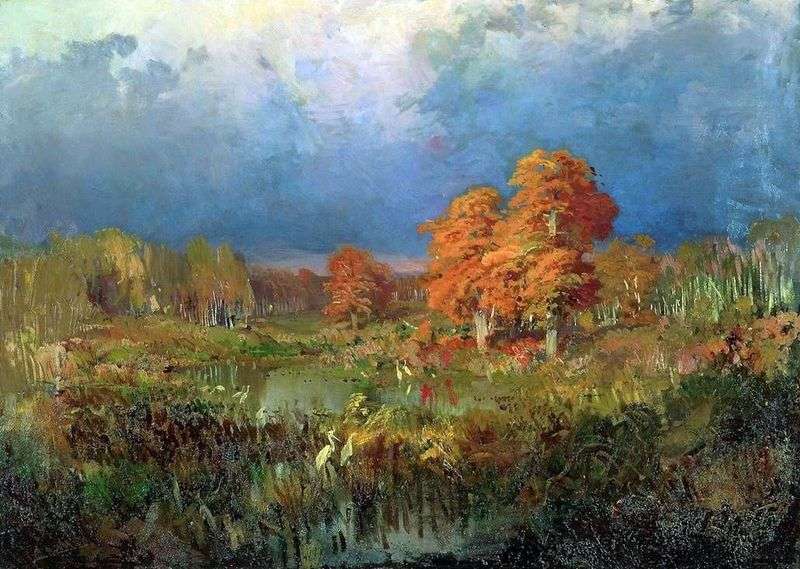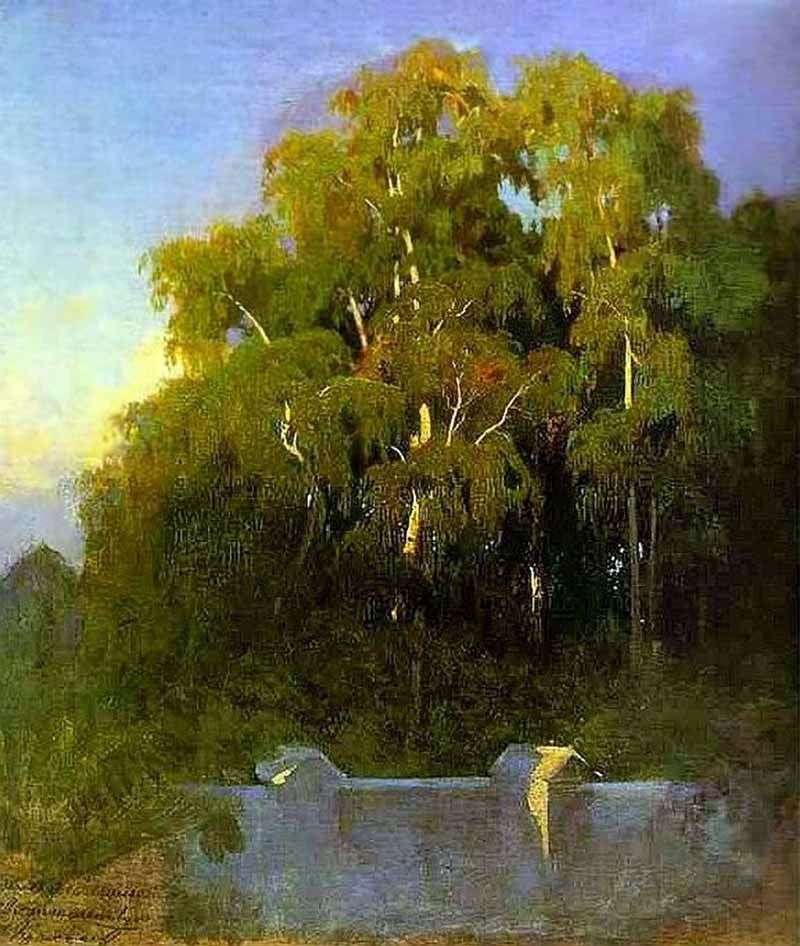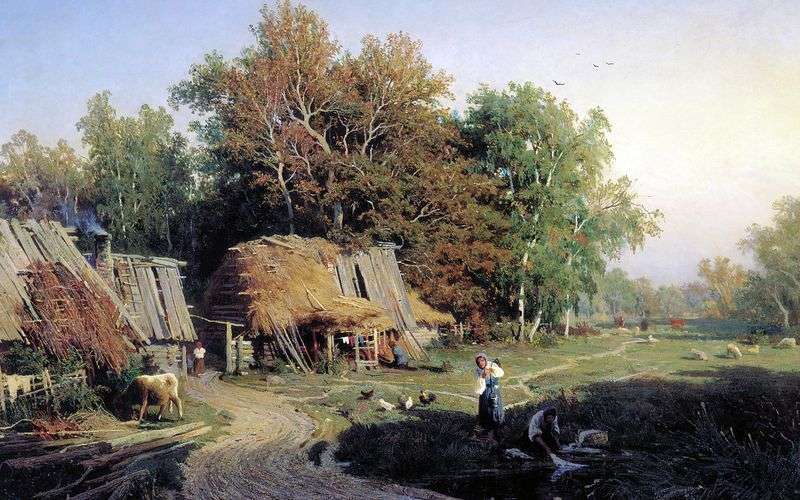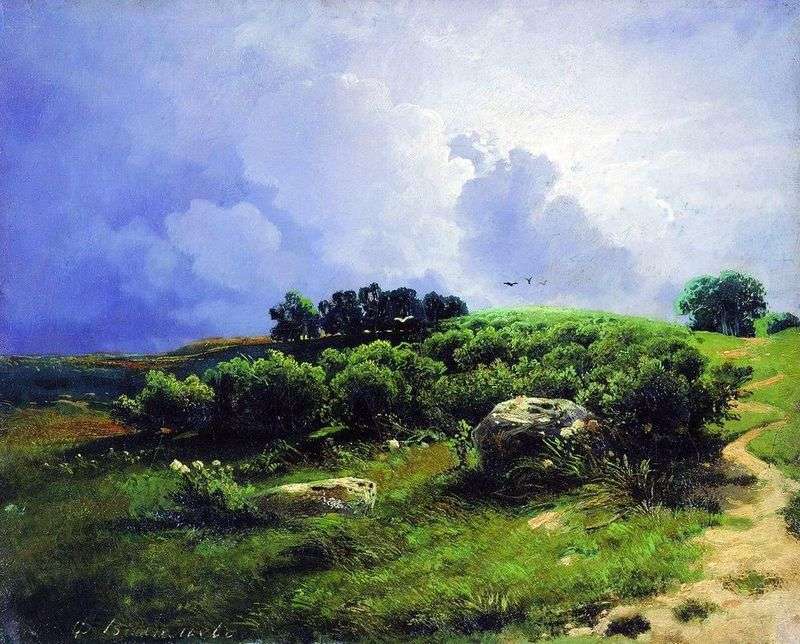
The last work, indirectly connected with the same theme of the dawn over the swamp, was obviously Vasiliev’s unfinished picture “The swamp in the forest, Autumn,” about which he did not report in detail in any letter, except for the mention of what he started in 1872 year painting under the general title “The Swamp is big.”
The landscape depicts an autumn forest in all the brightness of the reddish-orange color of autumn leaves. And by motive, and by a picturesque system, it stands alone among the last landscapes of Vasiliev, although here the foreground is given to a grassy swamp with resting white herons. With a general unfinished picture, it is difficult to say anything definite about the very painting itself. Its main feature at this stage is a wide letter and the desire to express and preserve in the picture the sound of pure color.
Painting “The Swamp in the Woods. Autumn” along with such works as “Morning” and “The Abandoned Mill,” gives a particularly clear idea of how varied Vasiliev’s search for the expression of the theme that excited him was. They manifested themselves not only in the variations of the plot, but also in purely pictorial solutions. And this last picture, no less than the other two works of this group, speaks of the offensive in the work of Vasiliev of a new, interrupted by the death stage. His latest picture Vasiliev said about the new plans, showed that he was on the verge of new discoveries in painting.
The picture is largely imperfect, but its shortcomings were evidence of a new steep and unexplored path, which Vasiliev entered. This was subtly felt by Kramskoy, who wrote to Vasilyev about the picture: “The real picture – no longer resembles anything, does not imitate anyone, has not the slightest, even distant resemblance to any artist or school, it’s something to such an extent original and isolated from all influences, standing outside the whole current movement of art, that I can say only one thing: it is not good yet, i. e. not quite well, even in places it is bad, but it is genius. “
 Abandoned mill by Fedor Vasilyev
Abandoned mill by Fedor Vasilyev In the Crimean Mountains by Fedor Vasilyev
In the Crimean Mountains by Fedor Vasilyev Near Red Village by Fedor Vasilyev
Near Red Village by Fedor Vasilyev Birch grove by the evening by Fedor Vasilyev
Birch grove by the evening by Fedor Vasilyev The village by Fedor Vasilyev
The village by Fedor Vasilyev Before the storm by Fedor Vasilyev
Before the storm by Fedor Vasilyev The Volga lagoon by Fedor Vasilyev
The Volga lagoon by Fedor Vasilyev In the forest in autumn by Isaac Levitan
In the forest in autumn by Isaac Levitan